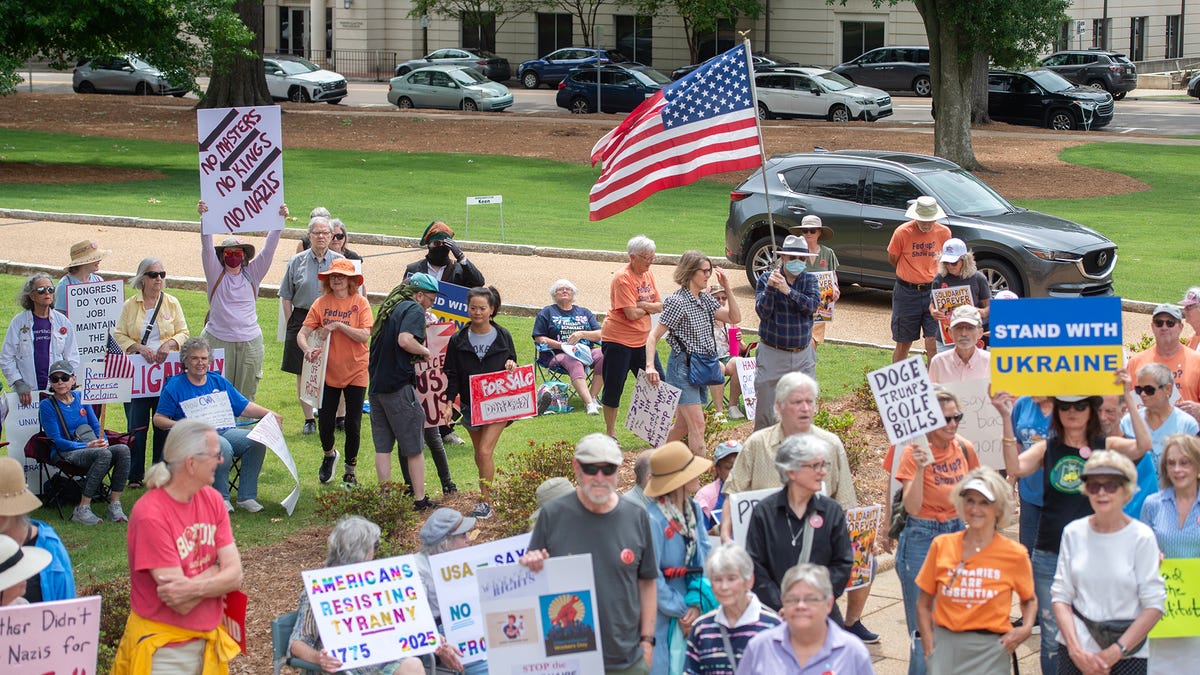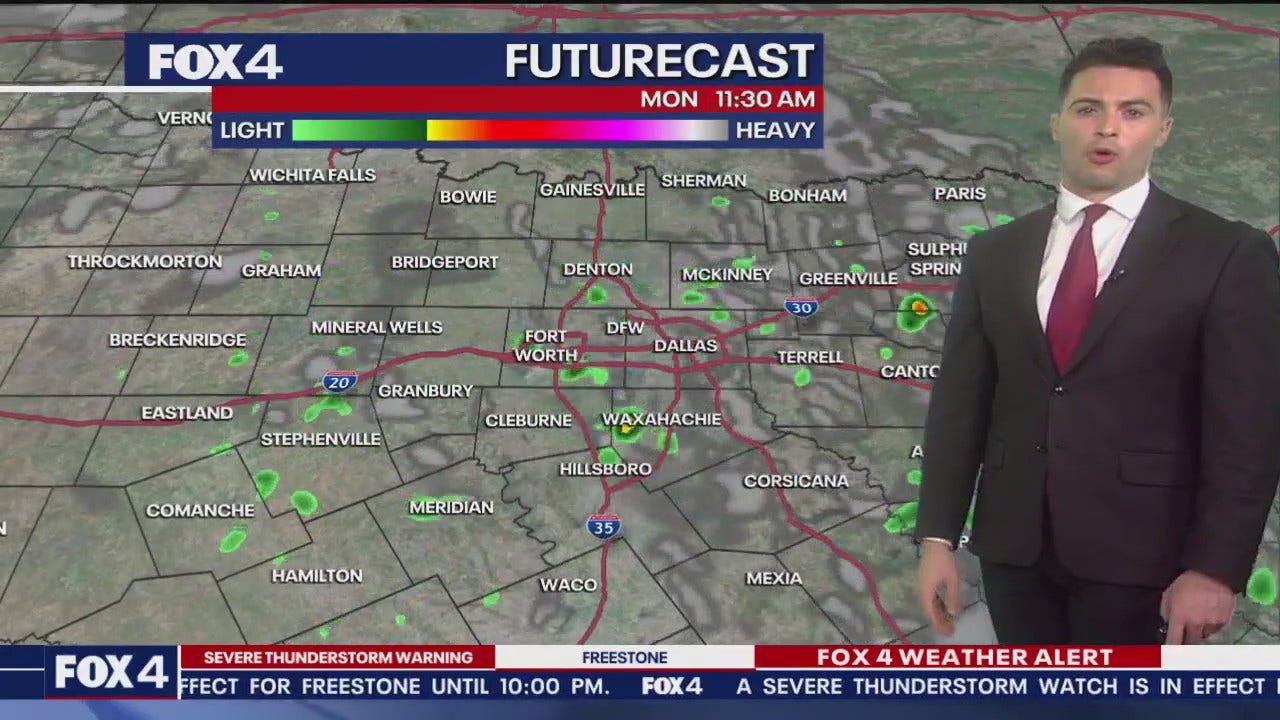World
Trump's words on Greenland and borders ring alarms in Europe, but officials have a measured response
PARIS (AP) — President-elect Donald Trump has tossed expansionist rhetoric at U.S. allies and potential adversaries with arguments that the frontiers of American power need to be extended into Canada and the Danish territory of Greenland, and southward to include the Panama Canal.
Trump’s suggestions that international borders can be redrawn — by force if necessary — are particularly inflammatory in Europe. His words run contrary to the argument European leaders and Ukrainian President Volodymyr Zelenskyy are trying to impress on Russian President Vladimir Putin.
But many European leaders — who’ve learned to expect the unexpected from Trump and have seen that actions don’t always follow his words — have been measured in their response, with some taking a nothing-to-see-here view rather than vigorously defend European Union member Denmark.
Analysts, though, say that even words can damage U.S.-European relations ahead of Trump’s second presidency.
A diplomatic response in Europe
Several officials in Europe — where governments depend on U.S. trade, energy, investment, technology, and defense cooperation for security — emphasized their belief that Trump has no intention of marching troops into Greenland.
“I think we can exclude that the United States in the coming years will try to use force to annex territory that interests it,” Italian Premier Giorgia Meloni said.
German Chancellor Olaf Scholz pushed back — but carefully, saying “borders must not be moved by force” and not mentioning Trump by name.
This week, as Ukrainian President Zelenskyy pressed Trump’s incoming administration to continue supporting Ukraine, he said: “No matter what’s going on in the world, everyone wants to feel sure that their country will not just be erased off the map.”
Since Putin marched troops across Ukrainian borders in 2022, Zelenskyy and allies have been fighting — at great cost — to defend the principle that has underpinned the international order since World War II: that powerful nations can’t simply gobble up others.
The British and French foreign ministers have said they can’t foresee a U.S. invasion of Greenland. Still, French Foreign Minister Jean-Noël Barrot portrayed Trump’s remarks as a wake-up call.
“Do we think we’re entering into a period that sees the return of the law of the strongest?” the French minister said. “‘Yes.”
On Friday, the prime minister of Greenland — a semiautonomous Arctic territory that isn’t part of the EU but whose 56,000 residents are EU citizens, as part of Denmark — said its people don’t want to be Americans but that he’s open to greater cooperation with the U.S.
“Cooperation is about dialogue,” leader Múte B. Egede said.
Danish Prime Minister Mette Frederiksen called the U.S. “our closest ally” and said: “We have to stand together.”
Analysts find Trump’s words troubling
European security analysts agreed there’s no real likelihood of Trump using the military against NATO ally Denmark, but nevertheless expressed profound disquiet.
Analysts warned of turbulence ahead for trans-Atlantic ties, international norms and the NATO military alliance — not least because of the growing row with member Canada over Trump’s repeated suggestions that it become a U.S. state.
“There is a possibility, of course, that this is just … a new sheriff in town,” said Flemming Splidsboel Hansen, who specializes in foreign policy, Russia and Greenland at the Danish Institute for International Studies. “I take some comfort from the fact that he is now insisting that Canada should be included in the U.S., which suggests that it is just sort of political bravado.
“But damage has already been done. And I really cannot remember a previous incident like this where an important ally — in this case the most important ally — would threaten Denmark or another NATO member state.”
Hansen said he fears NATO may be falling apart even before Trump’s inauguration.
“I worry about our understanding of a collective West,” he said. “What does this even mean now? What may this mean just, say, one year from now, two years from now, or at least by the end of this second Trump presidency? What will be left?”
Security concerns as possible motivation
Some diplomats and analysts see a common thread in Trump’s eyeing of Canada, the Panama Canal and Greenland: securing resources and waterways to strengthen the U.S. against potential adversaries.
Paris-based analyst Alix Frangeul-Alves said Trump’s language is “all part of his ‘Make America Great Again’ mode.”
In Greenland’s soils, she noted, are rare earths critical for advanced and green technologies. China dominates global supplies of the valuable minerals, which the U.S., Europe and other nations view as a security risk.
“Any policy made in Washington is made through the lens of the competition with China,” said Frangeul-Alves, who focuses on U.S. politics for the German Marshall Fund.
Some observers said Trump’s suggested methods are fraught with peril.
Security analyst Alexander Khara said Trump’s claim that “we need Greenland for national security purposes” reminded him of Putin’s comments on Crimea when Russia seized the strategic Black Sea peninsula from Ukraine in 2014.
Suggesting that borders might be flexible is “a completely dangerous precedent,” said Khara, director of the Centre for Defense Strategies in Kyiv.
“We’re in a time of transition from the old system based on norms and principles,” he said, and “heading to more conflicts, more chaos and more uncertainty.”
___
AP journalists Jill Lawless in London; Raf Casert in Brussels; Daria Litvinova in Tallinn, Estonia; Geir Moulson and David Keyton in Berlin; and Nicole Winfield in Rome contributed.

World
Mexico’s Judicial Election Is Today, but Voters Face Long and Complex Ballots

The plan is simple. Mexicans will vote on Sunday to elect judges across the country, in a vast overhaul that reaches from the Supreme Court to every level of the justice system.
The execution, however, can boggle the mind.
Voters are expected to choose nearly 2,700 judicial positions out of 7,800 candidates across federal and state elections, a huge undertaking whose complexity can be seen in the dizzying variety of color codings, candidate groupings and types of ballots that will be handed out.
In one state, 155 candidates are on a single page, reflecting the ambitions of Mexico’s governing Morena party to democratize the system. In another state, there is essentially no choice at all — what critics call a sign of the overhaul’s deep flaws.
The national election agency features a ballot simulator on its website, where citizens can practice voting and click on each candidate’s name to learn about that person.
But if a voter took five minutes to study each candidate, that would amount to over five hours for this ballot alone.
Voters will also elect 464 circuit court and 386 district court positions across Mexico. But these ballots vary by circuit and district.
Not everyone in the country will see the same specialties or vote for the same number of judges.
In some densely populated areas, there are so many positions that the national election authorities used a lottery to split up which candidates appear on which ballots.
“We are only going to elect a small number of judges who are going to hear our cases,” said Javier Martín Reyes, a law professor at the National Autonomous University of Mexico.
State ballots vary widely
All Mexican voters can cast ballots for federal candidates, but in 19 states, voters will have to choose local judges, as well, in some cases doubling the number of ballots that voters will have to sift through. (The remaining judicial positions will be elected in 2027.)
In Chihuahua state, voters will have to elect 305 local judges from nearly 900 candidates, the most officials on the ballot in any state. Voters in this district of Chihuahua, Morelos, have to go through 13 ballots — six federal and seven local — to get to all the candidates.
On this ballot for a low-level court, voters must choose five women and five men from 155 names.
At the other end of the spectrum is Durango state, where there are 49 positions up for grabs in the local court system on Sunday and 49 candidates.
All three branches of state government agreed on the same candidates — drawing criticism from local residents and legal experts who say this will be a simulation of an election, not a real one.
Those critics argue that the overhaul of the courts could give the governing party more power and open the door to underqualified or easily influenced candidates.
Supporters of the overhaul, including Mexico’s president, have downplayed those risks, saying that the vote will help root out corruption and nepotism by giving citizens the chance to pick their own judges, in contrast to the previous appointment-based system.
But in Durango, at least, each candidate needs only one vote to win. The number of votes still matters, though, because it will determine term limits and who will be the presiding judge in some courts, according to state officials.
On this page of the Durango ballot, eight women are vying for eight positions, and seven men are up for seven positions.
For this juvenile court in Durango, the ballot has one candidate for one position.
In the states of Coahuila and Quintana Roo, the ballot looks completely different.
Instead of choosing individual candidates, voters in those states will choose one of three columns, each representing the group of candidates put forth by the state’s executive, legislative and judicial branches.
The format is far simpler than the sprawling ballots that voters will receive in other states, but critics have argued that it gives voters fewer options and puts more power in the hands of those branches of government.
World
Doubt cast on Hamas-run ministry's claim that dozens killed collecting aid sent by Israel
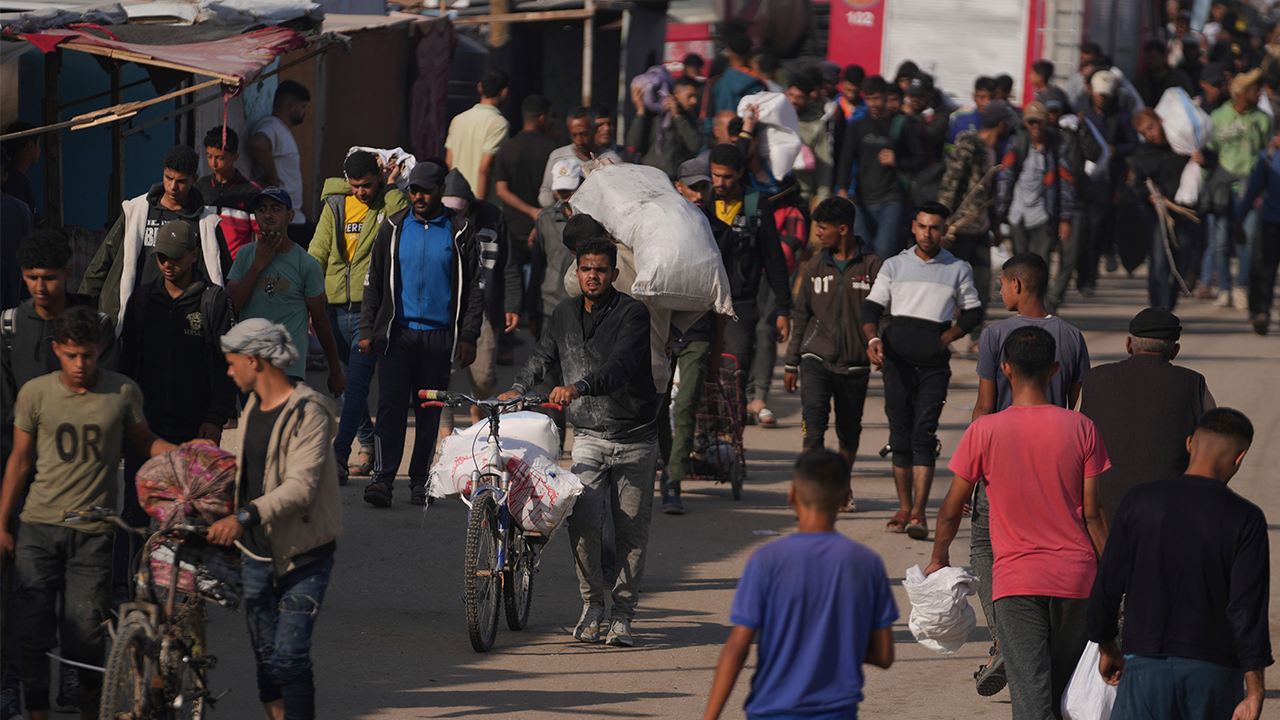
At least 26 Palestinians were reportedly killed and some 175 were wounded as they made their way to receive food in the Gaza Strip, according to officials from the Hamas-run health ministry and witnesses, but Israeli officials dispute these claims.
Witnesses said Israeli forces fired on crowds around 1,000 yards away from an aid site run by the Israeli-backed Gaza Humanitarian Foundation (GHF). A Palestinian journalist told the BBC that thousands of Palestinians had gathered near the aid site near Gaza’s southern city of Rafah when Israeli tanks approached and opened fire on the crowd.
The Israeli Defense Forces said it is “currently unaware of injuries caused by IDF fire within the Humanitarian Aid distribution site,” adding that “the matter is still under review.”
“It is false and fabricated. All aid was distributed today without incident,” the GHF said. “No injuries or fatalities as noted in our daily update sent out earlier. We have heard that these fake reports have been actively fomented by Hamas. They are untrue and fabricated.”
The GHF has denied previous accounts of chaos and gunfire around its sites, which are in Israeli military zones where independent access is limited.
ISRAEL HOSTAGE DEAL IN DOUBT AS HAMAS ADDS DEMANDS, US ENVOY CALLS TERMS ‘UNACCEPTABLE’
Palestinians carry bags containing food and humanitarian aid packages delivered by the Gaza Humanitarian Foundation, in Khan Younis, southern Gaza Strip, Sunday, June 1, 2025. (AP)
In its statement, the foundation dismissed what it referred to as “false reporting about deaths, mass injuries and chaos.”
The organization’s distribution of aid has been marred by chaos, with multiple witnesses having said Israeli troops fired on crowds near the delivery sites. Before Sunday, at least six people had been killed and more than 50 wounded, according to local health officials.
The foundation says the private security contractors guarding its sites have not fired on the crowds. The Israeli military has said it fired warning shots in previous incidents.
As thousands of people headed toward the distribution site hours before dawn, Israeli forces ordered them to disperse and return later, witnesses said. When the crowds reached the Flag Roundabout, around 1,000 yards away, at around 3 a.m., the military opened fire, the witnesses said.
“There was fire from all directions, from naval warships, from tanks and drones,” Amr Abu Teiba, who was in the crowd, said.
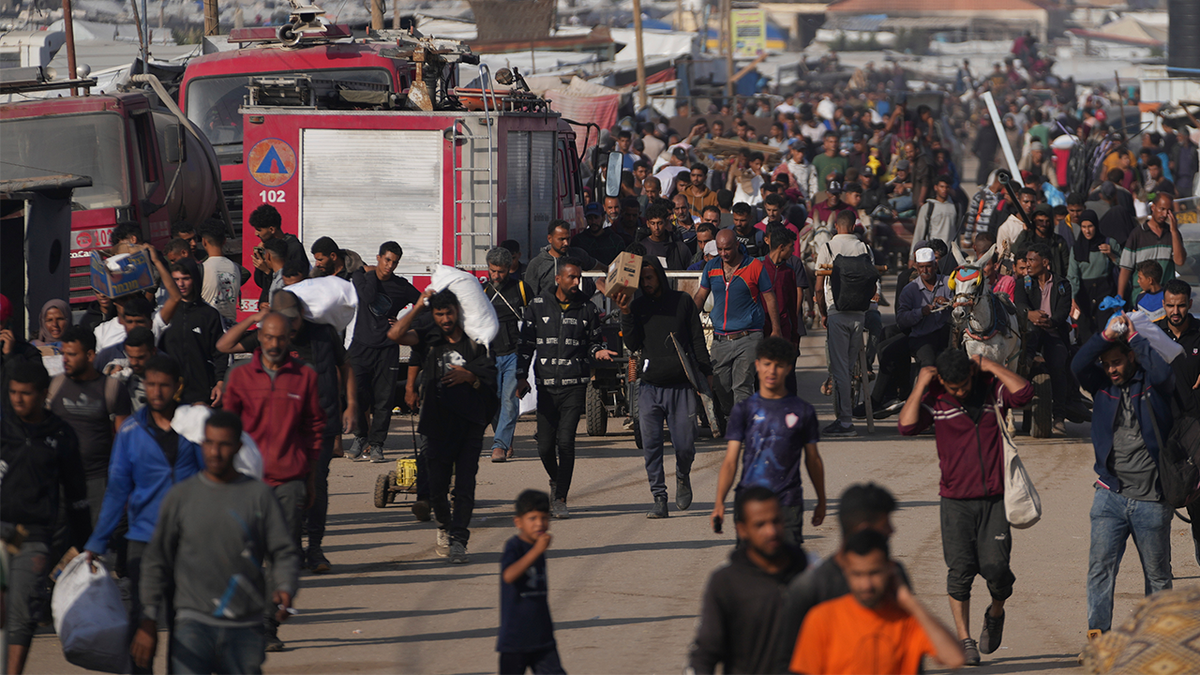
Palestinians carry boxes and bags containing food and humanitarian aid packages delivered by the Gaza Humanitarian Foundation, in Khan Younis, southern Gaza Strip, Sunday, June 1, 2025. (AP)
He said he observed at least 10 bodies with gunshot wounds and several other wounded people, including women. People used carts to carry the victims to the field hospital.
Another witness, Ibrahim Abu Saoud, gave a nearly identical account. Abu Saoud said he saw many people with gunshot wounds, including a young man who he said had died at the scene.
Mohammed Abu Teaima said he saw Israeli forces open fire and kill his cousin and another woman as they were on their way to the distribution site. He said his cousin was shot in his chest and died at the scene, while many others were wounded, including his brother-in-law.
“They opened heavy fire directly towards us,” he said.
HUCKABEE SLAMS FRENCH-BACKED PALESTINIAN STATEHOOD PUSH AT UN, SAYS US-ISRAEL ARE ‘INSEPARABLY’ LINKED
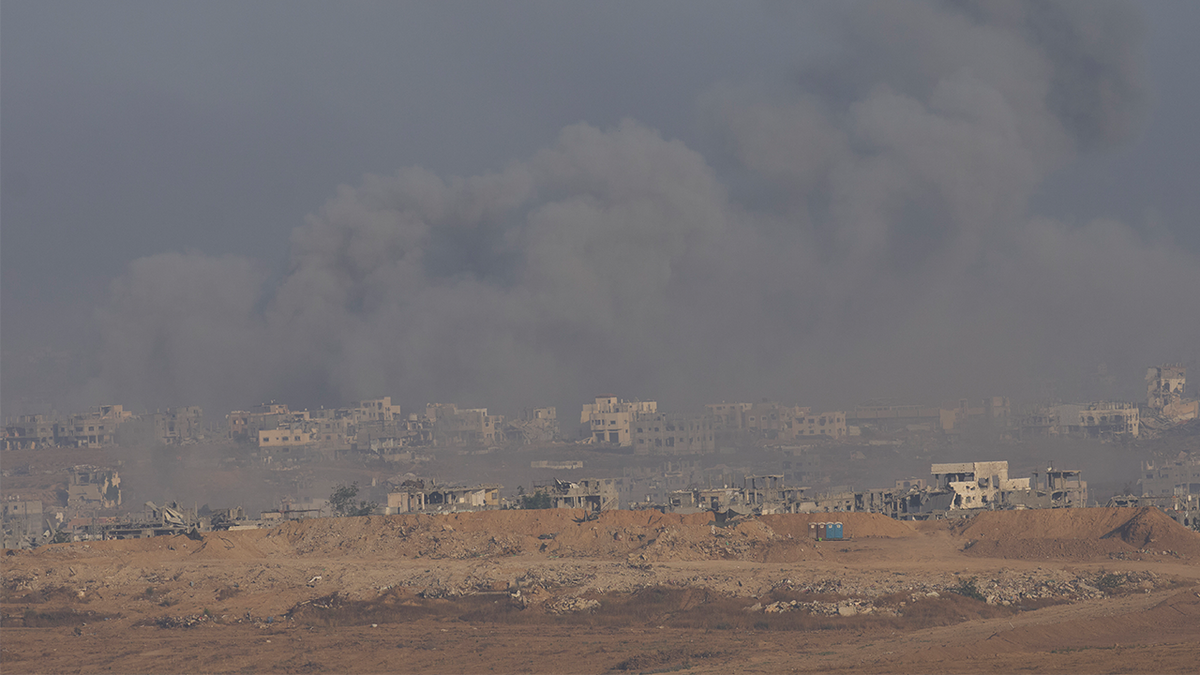
Smoke rises following an Israeli army bombardment in the Gaza Strip, seen from southern Israel, Sunday, June 1, 2025. (AP)
Israel and the U.S., which also backs the foundation, say the new aid system seeks to prevent Hamas from taking away aid. Israel has not provided any evidence of systematic diversion and the U.N. denies it has happened.
U.N. agencies and major aid groups have refused to work with the new system, arguing that it violates humanitarian principles since it allows Israel to control who receives aid and forces people to relocate to distribution sites.
The U.N. system has struggled to bring in aid after Israel recently slightly eased its total blockade of the territory. The groups say Israel’s restrictions, the breakdown of law and order and widespread looting make it extremely difficult to deliver aid to Palestinians in Gaza.
The Associated Press contributed to this report.
World
Two dead, hundreds arrested during PSG Champions League celebrations
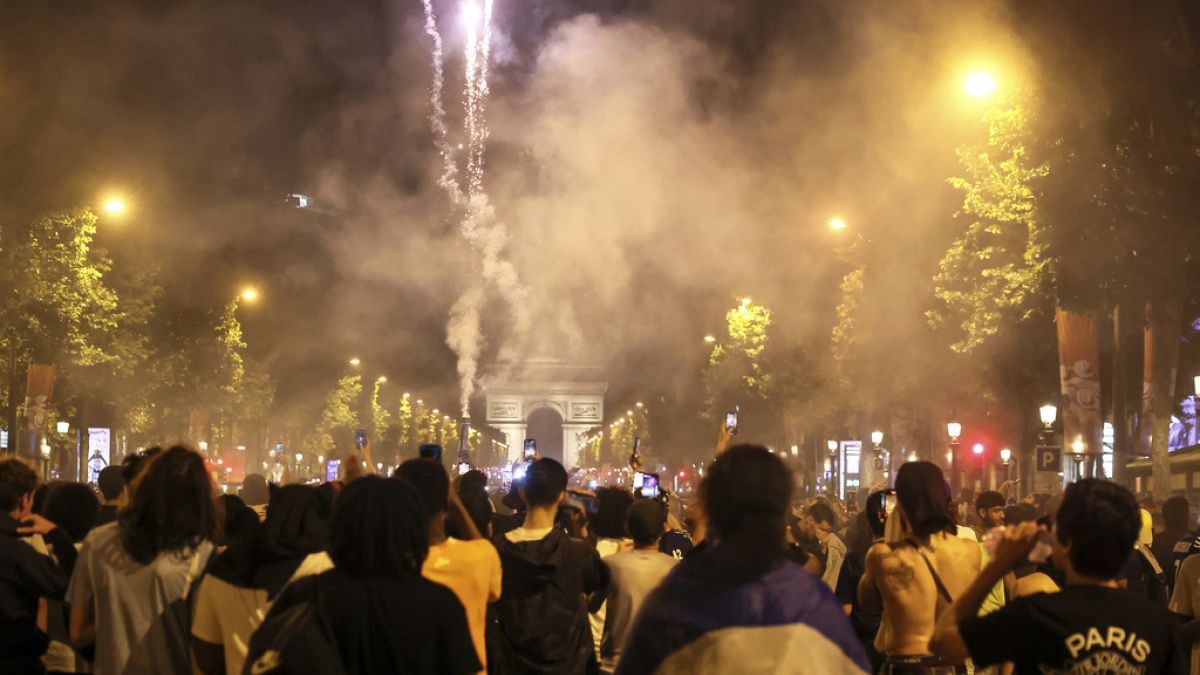
with AP
Published on •Updated
French authorities say two fans died after celebrations around the country for Paris Saint-Germain’s historic Champions League victory, European club football’s biggest prize.
A 17-year-old boy was stabbed to death in the city of Dax during a PSG street party, according to the national police. And a man was killed in Paris when his scooter was hit by a car during PSG celebrations, the interior minister’s office said. The circumstances of both deaths are being investigated.
French interior minister Bruno Retailleau commented in a post on social media on Saturday after the game:
“True PSG fans are getting excited about their team’s magnificent performance. Meanwhile, barbarians have taken to the streets of Paris to commit crimes and provoke law enforcement … It is unbearable that it is not possible to party without fearing the savagery of a minority of thugs who respect nothing.”
A police officer was accidentally hit by fireworks in northwest France and placed in an artificial coma because of grave eye injuries, the national police service said.
The interior ministry said 18 police officers in Paris were injured, along with three elsewhere in France, as were 192 people celebrating in the streets.
A total of 294 people were arrested by 2 am, though the celebrations were mostly peaceful apart from the descent into violence in some areas.
Celebrations to continue upon squad’s return to Paris
Meanwhile, the Paris Saint-Germain squad is returning from Munich to the French capital on Sunday to continue celebrating with tens of thousands of the team’s fans.
They are set to arrive in Paris at 4 pm on the club’s own Qatar Airways jet.
-
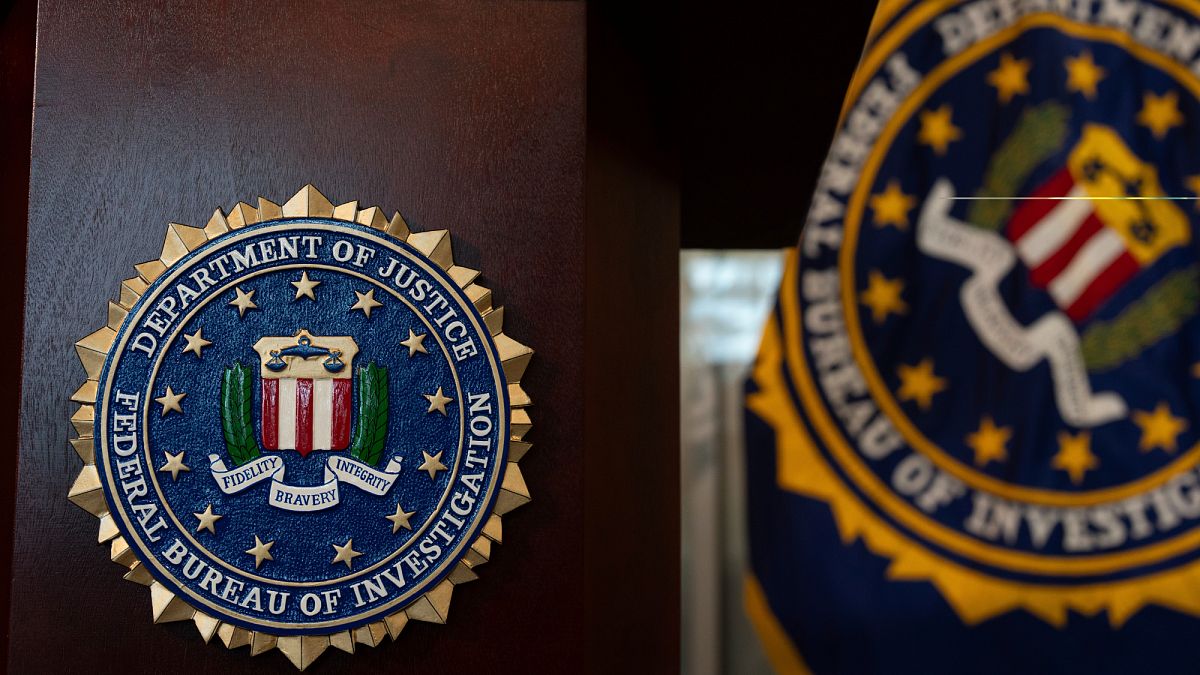
 World1 week ago
World1 week agoNeo-Nazi cult leader extradited to US for plot to kill Jewish children
-

 Movie Reviews1 week ago
Movie Reviews1 week agoMovie review: 'Dogma' re-release highlights thoughtful script – UPI.com
-

 Technology1 week ago
Technology1 week agoDiscord might use AI to help you catch up on conversations
-

 Business1 week ago
Business1 week agoPlastic Spoons, Umbrellas, Violins: A Guide to What Americans Buy From China
-

 World1 week ago
World1 week agoCade Cunningham Gains $45 Million From All-NBA Honors
-

 Movie Reviews6 days ago
Movie Reviews6 days agoMOVIE REVIEW – Mission: Impossible 8 has Tom Cruise facing his final reckoning
-
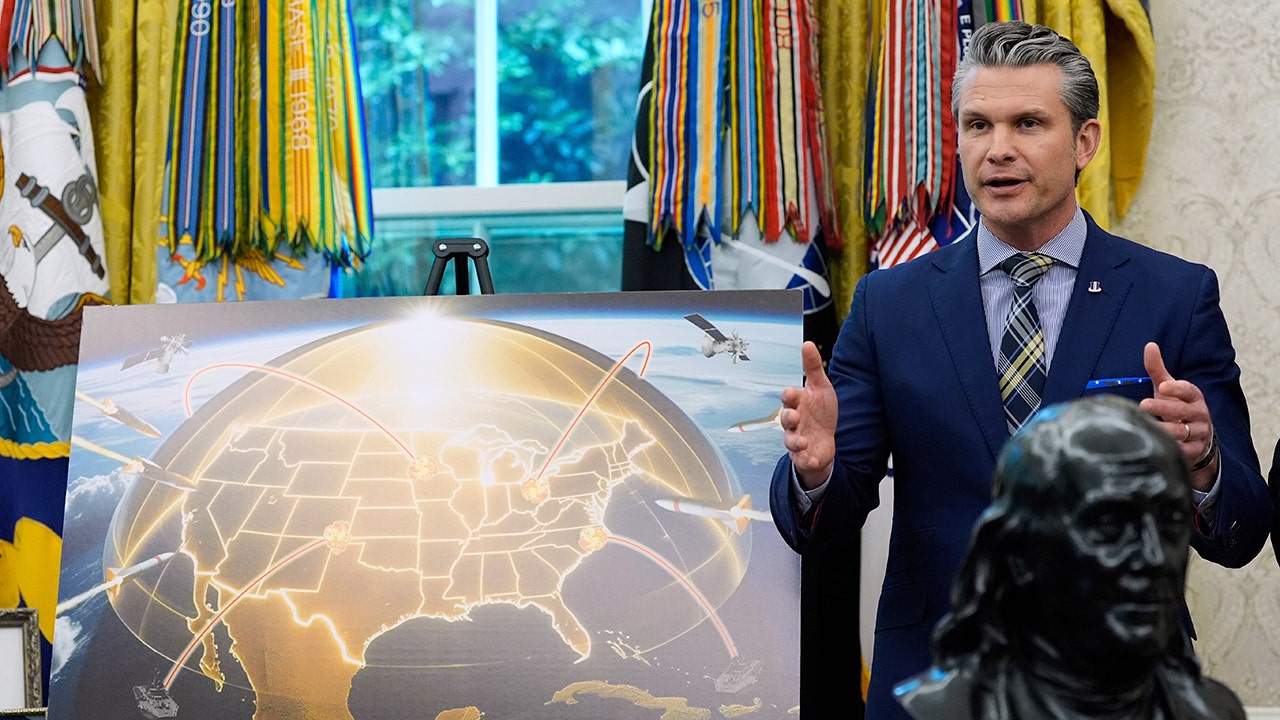
 Politics1 week ago
Politics1 week agoDefense secretary announces pay raises for Army paratroopers: 'We have you and your families in mind'
-

 Education1 week ago
Education1 week agoVideo: Judge Blocks Trump Move to Ban Foreign Students at Harvard



